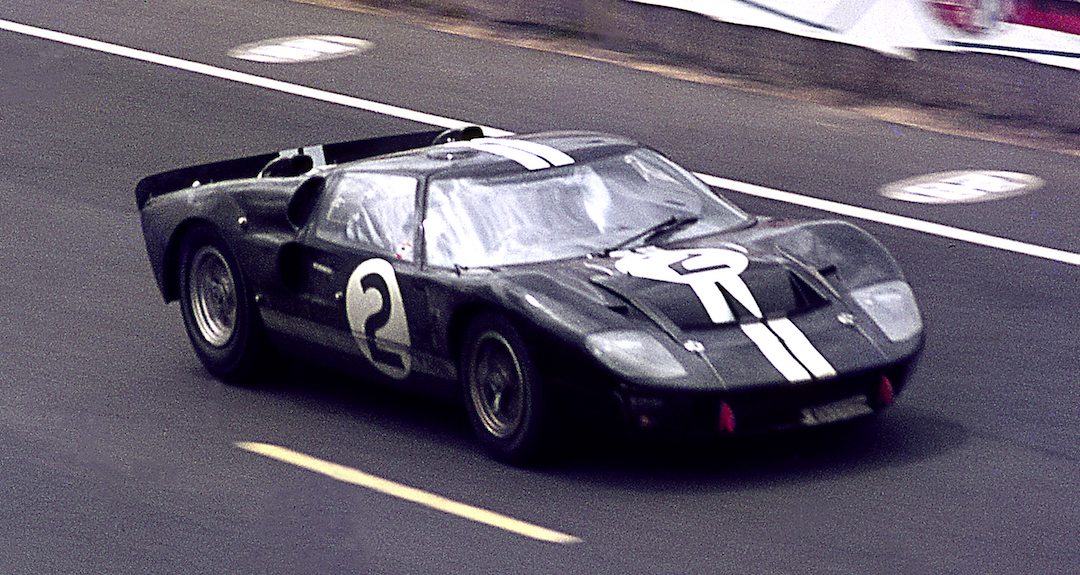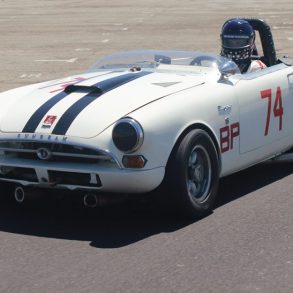The news has emerged that Roy Lunn, known to many as the Godfather of the GT40, passed away on August 5 at the age of 92 after suffering a catastrophic stroke.
Roy was born in Richmond, England in 1925, earned degrees in Mechanical and Aeronautical Engineering at Kingston Technical College and was a pilot in the RAF. When World War II ended, he transferred to the Royal Aircraft Establishment in Farnborough and worked on the design and development of gas turbine generators for the first Turbo-Jet aircraft.
He started his automotive career at AC Cars as an engineer in 1946 and, in the late-1940s, he became the Assistant Chief Designer (1947-1949) at Aston Martin, building two DB2s that competed at Le Mans. After three years as Chief Designer and Engineer at Jowett Cars, in 1953 he joined Ford of England as an engineer and product-planning manager.
In 1958, Lunn moved to the U.S., taking a position at Ford Central Advanced Engineering. Between 1958 and 1969 his titles included: head of the Advanced Vehicle Department and Advanced Concepts Group. Some of the projects he was responsible for included: Mustang I, Big Red, the Superhighway truck, Flying Car Concept, the mid-engined Mustang and all the GT40 variants.
He left Ford in 1969 to become Vice-President of Engineering at Kar-Kraft where he oversaw production of the Boss 429 Mustang and development of Mustang concepts with mid-mounted 429 engines. In 1971 Roy was recruited by American Motors Corporation (AMC) to become the Technical Director of Engineering for Jeep.
A dozen years later, he was responsible for the vehicle that would change the automotive landscape in America and beyond: the ’83 Jeep Cherokee XJ. It is considered to be the first modern, lightweight four-wheel-drive unibody SUV. The Cherokee was the first American-branded vehicle to be manufactured in China, and a huge success for AMC and then Chrysler. More than three million units were sold by 2001.
Lunn is also credited with the AMC Eagle, the first production four-wheel-drive car. He was elevated to Chief Engineer of AMC and President of Renault Jeep Sport and centralized all AMC-Renault competition programs in the U.S. Lunn also developed the first SCCA Spec-racer in 1983, the Sports Renault.
He also served as Chairman of the Technical Board of the Society of Automotive Engineers (SAE) in 1982-1983 and elected a Fellow of the Society in 1983. After retiring from AMC in 1985 he joined AM General as Vice President Engineering to head the HUMVEE military compliance program for the Pentagon.
In 1987 he retired to Florida and continued to work on automotive projects. In his retirement he authored three books: The Oil Crisis: Sooner Than You Think!, 2004, Globalization- A Worldwide Quest For A Sustainable Future, 2008, and The World Crisis- It All Started With 9/11, 2009.
After relocating to Santa Barbara, California, in 2015 he again set up a working home office and continued development of his new concepts that drew the attention of the local college, the University of California, Santa Barbara. Within six months he was a Mentor to their Mechanical Engineering program and met with students weekly to advise and teach them. He was rewarded with an in-depth research project focusing on his plans for the ‘Peoples Car’ and a 3-D model of the concept.
Lunn was one of the industry’s original disrupters, possessing an inquiring mind and the relentless ability to utilize it. He was inducted into the Automotive Hall of Fame in 2016 for overseeing the development of the legendary Ford GT40. He felt it was the proudest moment of his life when his peers in the industry recognized his work. His goals throughout his career were visionary, with a clear eye to the future. Roy was especially proud of the 1967 Le Mans-winning Ford Mark IV, the first GT40 designed, engineered, powered, developed and built in the U.S.
He is survived by his wife of 70 years, Jeanie, two daughters, two granddaughters, a son-in-law and one great-grandson. To them as well as his many friends in the industry, Vintage Racecar extends its deepest condolences.










